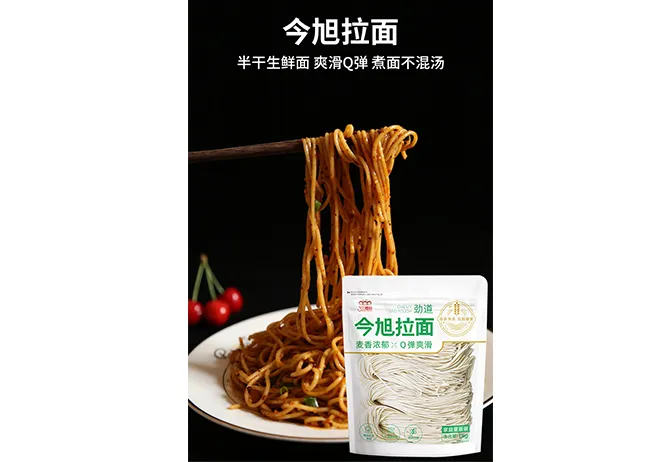japanese konjac noodles
Japanese Konjac Noodles A Culinary Delight and Health Powerhouse
In recent years, the culinary world has been swept off its feet by a unique ingredient known as konjac noodles, or shirataki in Japanese. As global food enthusiasts seek healthier alternatives to traditional noodle dishes, konjac noodles are gaining popularity due to their health benefits, low-calorie content, and versatility. This article explores the origins, nutritional advantages, cooking methods, and culinary uses of Japanese konjac noodles.
Origins and Production
Konjac originates from the konjac plant (Amorphophallus konjac), which is native to Asia, especially Japan, China, and Indonesia. The root of this plant is primarily composed of glucomannan, a soluble dietary fiber that is responsible for the unique properties of konjac noodles. The process of making konjac noodles involves harvesting the konjac root, drying it, and then grinding it into a flour. This flour is mixed with water and a small amount of lime or calcium hydroxide to create a gel-like substance, which is then shaped into noodles or other forms and packaged for sale.
In Japan, konjac has been a part of the culinary landscape for centuries. Traditionally, it has been used in various dishes, such as oden and sukiyaki, and has been celebrated for its health benefits. The Japanese have long recognized the value of konjac as a low-calorie, high-fiber food, making it a staple in health-conscious diets.
Nutritional Benefits
One of the most significant advantages of konjac noodles is their exceptional nutritional profile. They are virtually calorie-free, containing only about 10 calories per serving, which makes them an excellent choice for individuals looking to manage their weight. In contrast, traditional wheat or rice noodles can contain several hundred calories per serving.
The high content of glucomannan in konjac noodles contributes to various health benefits. This soluble fiber can help promote feelings of fullness, which aids in weight management by reducing overall calorie intake. Additionally, glucomannan has been linked to improved digestive health, as it acts as a prebiotic that nourishes beneficial gut bacteria. Studies have also suggested that glucomannan can help lower cholesterol levels, support blood sugar control, and even aid in the reduction of constipation.
japanese konjac noodles

Cooking and Uses
Konjac noodles are incredibly versatile and can be incorporated into a wide range of dishes, making them a favorite among home cooks and professional chefs alike. One of the best aspects of konjac noodles is their ability to absorb flavors, which makes them an excellent canvas for various sauces and seasonings.
Before cooking, konjac noodles should be rinsed thoroughly to remove any excess liquid and a slight earthy aroma. They can then be added directly to stir-fries, soups, or salads. Since they are already cooked during the production process, they only require a brief heating time, making them a quick and convenient option for busy individuals.
For those looking to create a comforting bowl of ramen, konjac noodles can easily substitute for traditional noodles. Pair them with a rich broth, your choice of protein, and a selection of fresh vegetables for a satisfying meal. Alternatively, konjac noodles can be served cold in salads, dressed with a light vinaigrette and accompanied by cucumbers, carrots, and sesame seeds for a refreshing option.
Culinary Innovations
With the rise in health awareness, many innovative food companies are experimenting with konjac-based products beyond traditional noodles. This includes konjac rice, which is made from the same plant and serves as an excellent low-calorie substitute for rice dishes. These products are making their way into grocery stores and are quickly becoming favorites among those who seek healthier options.
In conclusion, Japanese konjac noodles are not only a low-calorie alternative to traditional noodles but also a versatile ingredient that can be enjoyed in many dishes. With their rich history, impressive nutritional benefits, and adaptability in the kitchen, konjac noodles are paving the way for a healthier and more enjoyable way of eating. Whether you are a seasoned chef or a novice cook, incorporating konjac noodles into your meals can enhance your culinary repertoire while supporting your health goals.
-
Unleash Your Inner Chef with Delectable Italian Pasta CreationsNewsAug.01,2025
-
Savor Health and Flavor: Irresistible Soba Noodles for Sale Await!NewsAug.01,2025
-
Nourish Your Body with Premium Organic Ramen - A Culinary Delight AwaitsNewsAug.01,2025
-
Elevate Your Dishes with Our Exquisite Kinds of Egg NoodlesNewsAug.01,2025
-
Dive into Flavorful Convenience with Our Ramen OfferingsNewsAug.01,2025
-
Discover Exquisite Types of Naengmyeon and Chilled Soba NoodlesNewsAug.01,2025
-
Is Whole Wheat Pasta Healthy?NewsMay.30,2025
Browse qua the following product new the we

















































































































